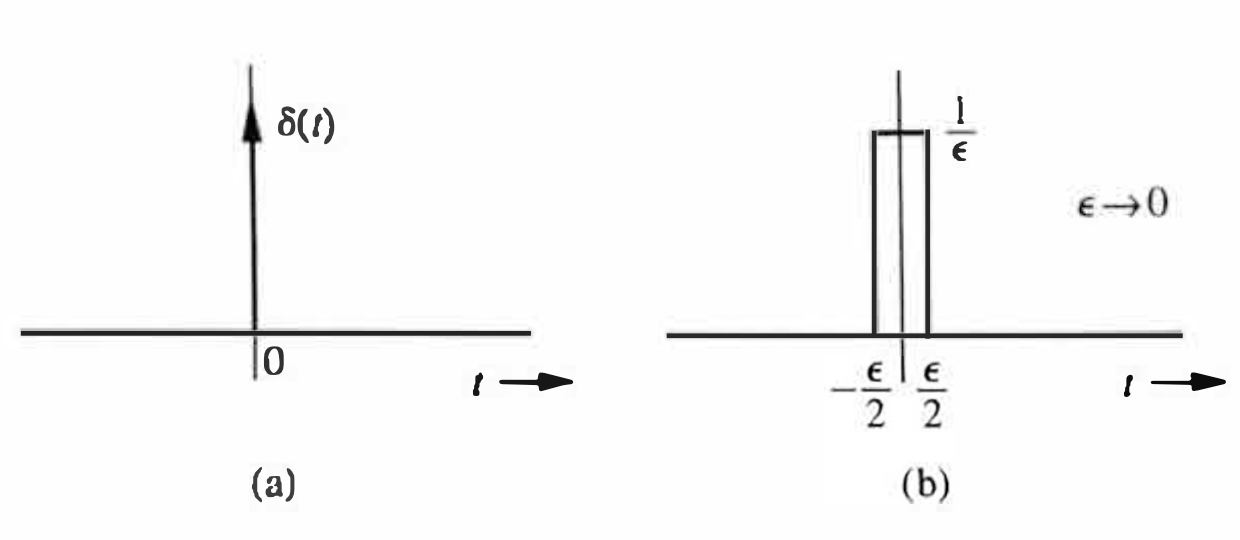Some Useful Signal Models
Sources:
- B. P. Lathi & Roger Green. (2021). Chapter 1: Signals and Systems. Signal Processing and Linear Systems (2nd ed., pp. 64-136). Oxford University Press.
- James McClellan, Ronald Schafer & Mark Yoder. (2015). Sinusoids. DSP First (2nd ed., pp. 9-40). Pearson.
The unit step function
The continuous-time unit step function
Definition: The unit step function,
The discrete-time unit impulse function
The rectangular pulse
A common situation in a circuit is for a voltage to be applied at a particular time (say
This voltage has strength 1 , duration
The unit impulse function
The continuous-time unit mpulse function
Definition: The unit impulse function,
We can visualize an impulse as a tall, narrow, rectangular pulse of unit area, as illustrated in Fig. 1.19b.

The width of this rectangular pulse is a very small value
Since
The discrete-time unit impulse function
Multiplication of a function by an impulse
Let us now consider what happens when we multiply the unit impulse
which equals to
We can generalize this result. Say that provided
which equals to
Meanwhile, we also have
Q.E.D.
Sampling property of the unit impulse function
From
This property is very important and useful and is known as the sampling or sifting property of the unit impulse.
Unit impulse as a generalized function
The definition of the unit impulse function given in
These difficulties are resolved by defining the impulse as a generalized function of an impulse, rather than an ordinary function. A generalized function is defined by its effect on other functions instead of by its value at every instant of time.
Because the unit step function
This result shows that
Consequently, # TODO
We observe that the area from